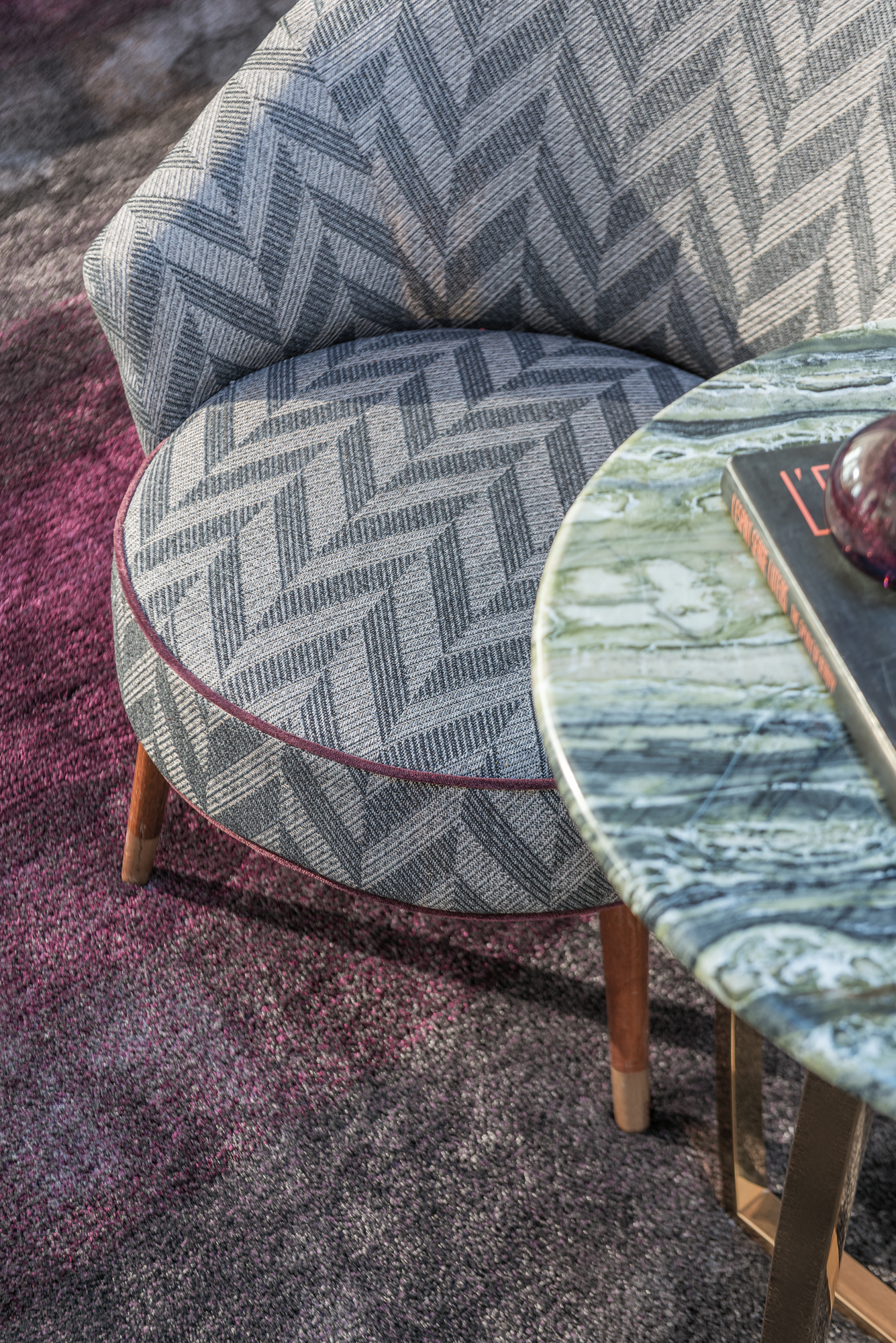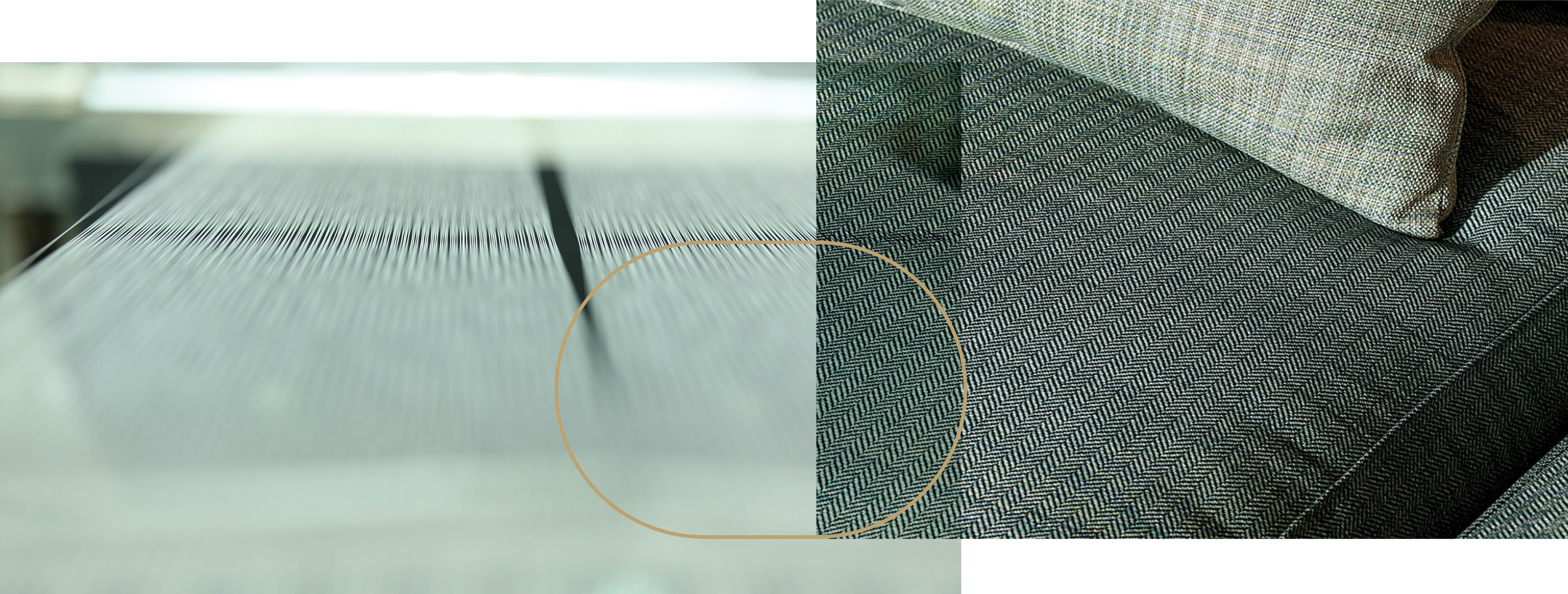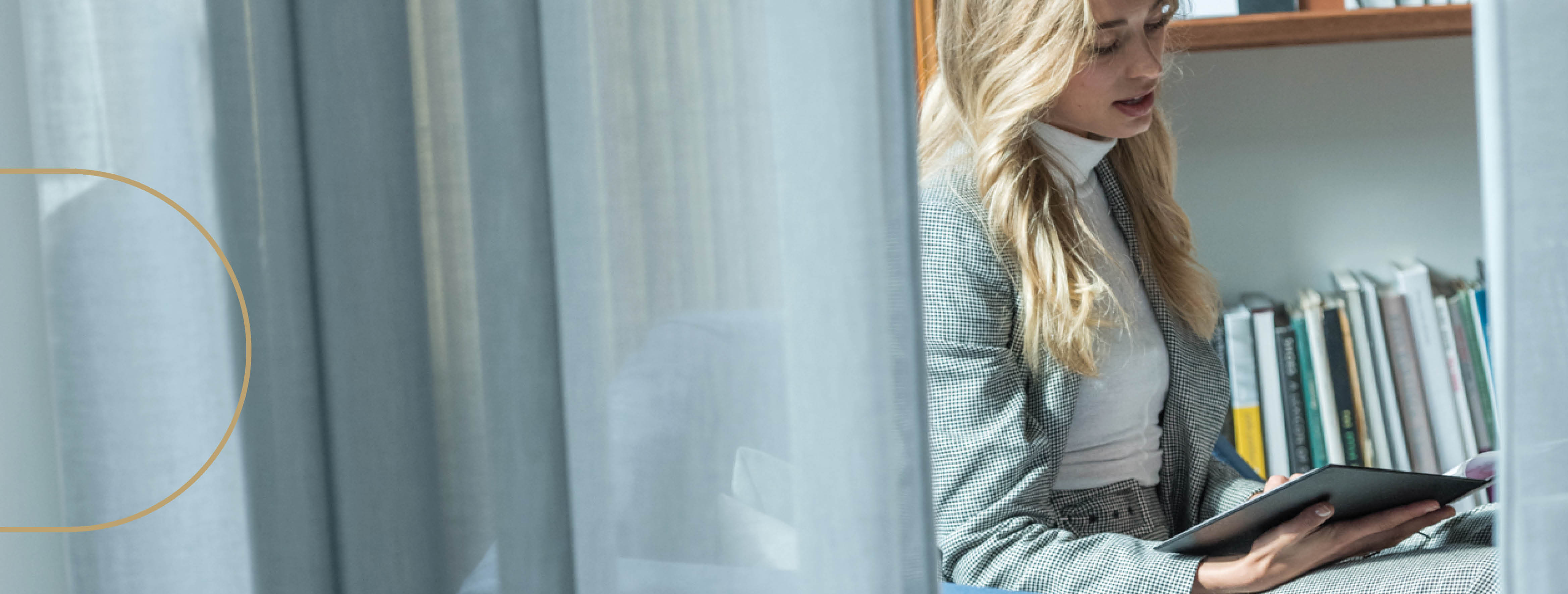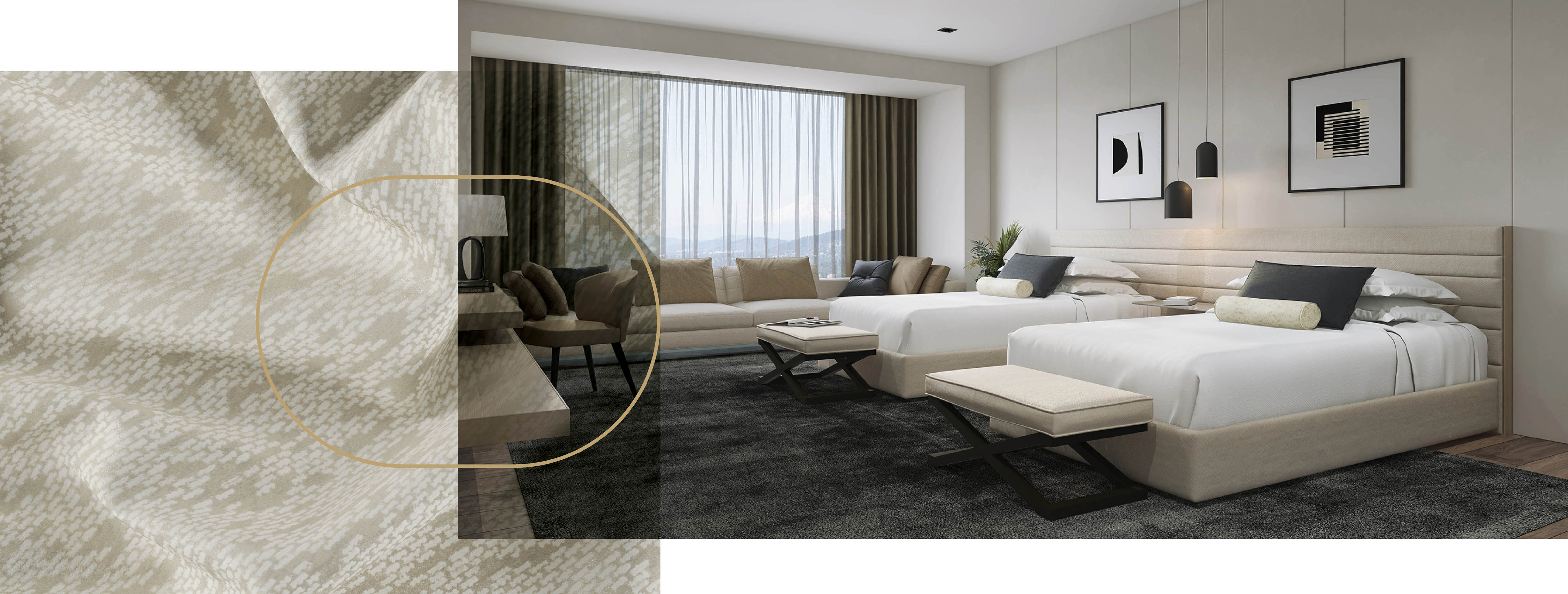Herringbone-patterned fabric is a timeless choice both in fashion and furniture fabrics, and it's surging in popularity now again. Its distinctive pattern makes it an iconic option but there's lots of questions that people generally have when it comes to using herringbone patterned fabric specifically as furniture fabric.
And so, today, we're here to explain a little bit about the main concerns people generally have about herringbone fabric, and answer people's questions. We'll also show so you show you some really nice examples.
OK let's get started.

What is herringbone fabric?
Herringbone looks just like chevron, people think, and it's pretty easy to get it confused if you're just looking at one pattern or another in sample books.
It's not a type of material itself. Like chevron it's a pattern, and characterised by a kind of a zigzag design that basically looks like the bones of a herring fish, hence the name.
Sometimes, fun fact, in the industry it's known as a broken twill weave but that's if you're being technical and are weaving professionally.
Note:
Flatshots in this blog post are:
Aten Dim Out / Aditya / Pristine
How is herringbone pattern created in fabric?
Herringbone pattern is formed during the weaving process, traditionally, by alternating the direction of the diagonal lines of threads. So, instead of a continuous diagonal line like you’d get in a standard twill weave (see image), the herringbone weave pattern breaks off and reverses direction at regular intervals, which then creates the very iconic V shape.
The fact that the threads are all interlaced like this makes of much stronger fabric, which then contributes to its unique texture and inherent strength. We’ll get on to what we mean as a ‘strong fabric’ in a second.
Nowadays, thanks to the wonders (or evils) of modern weaving technology (depending on what side you’re on), you can get any kind of pattern printed onto a plain fabric, and that includes herringbone. The way that this works is that the design is put through a kind of reverse scanning machine prints the pattern onto the fabric, just like any paper printer you’ve ever seen.
This results in a cheaper, brittle product, which, thanks to the materials used in printing, is also not as great for the environment. The ink alone, for example, contains volatile organic compounds (VOCs). If you want to learn more, The Environmental Impact of Fabric Printing is a good place to start.
So yes, printing herringbone pattern on fabric is quicker and probably costs less, in money terms, but that shows itself in the final product as well.

What kinds of fibres is herringbone pattern fabric made from?
This pattern been made from lots of different kinds of fibres, from natural or synthetic or blends. We’re talking about wool, cotton, and linen fibres which you don't see that often in this pattern, especially not as drapery.
Synthetic fibres, like polyester, are more geared towards furniture and drapery fabric, because they would offer enhanced durability, stain resistance, and easier cleaning then the so-called ‘natural fibres’ would if you were to put them on your couch or hang them in your room as curtains.
Is herringbone fabric durable enough for upholstery and drapery?
Because herringbone patterned fabrics can be made from different blends of fibres, it's perfect for upholstery, especially if it's traditionally woven and not printed. It results in a very durable fabric for upholstery thanks to the fact that the nature of the weave is so tight and interlocked.
The weave then boosts the fabric’s structural integrity from the get-go, meaning that it's resistant to wear and tear. For example, people sitting down and getting up again, people opening and closing curtains; performance like this is important in high traffic spaces like hotels or resorts.
Does herringbone fabric wrinkle in furniture fabric?
In general, traditionally made herringbone fabric is woven so tightly together that it's less prone to wrinkle on furniture.
Now, obviously, the types of fibers come into this as well. If you were to have curtains made out of linen with a delicate herringbone pattern, for example, that doesn't necessarily make the linen itself wrinkle-free or durable.

What kind of visual appeal does herringbone fabric add to furniture?
Herringbone pattern is a very love-it-or-hate-it kind of deal. Yes, it adds significant visual impact—the pattern itself, the interlacing, all of that, the depth of it. There's a definite sophistication that it would add to any piece of curtains or sofa fabrics, etc.
The pattern itself has a very subtle texture which can appear almost solid from a distance. It's very traditional, very understated, very elegant. It conveys a real feeling of quality visually and effortless elegance.
What kind of styles go with herringbone pattern fabric?
Because herringbone is such a refined and simple pattern, it makes it very versatile. We generally would see it in ‘traditional’ style living spaces, but definitely in more modern ones too, because it quickly gives a sense of a kind of historical connotations; looking back at an earlier time of elegance that's faded, such as in the Art Deco era, which was all about geometric designs such as this.
Using patterns is a simple way for designers to evoke a sense of something in the room, because they all have a history and story of their own, which they then bring to the space.
The scale of the herringbone pattern would also influence your end result an awful lot. By that I mean the size of the V shapes.
For example, if they were large, pronounced patterns, it would have a quite bold effect. It would add a dynamic element to the room, as geometric patterns generally do, one that's definitely eye-catching.
It’s a bit of a double-edged sword though: be careful using it so that it doesn't overwhelm the rest of the space.
If the herringbone pattern is small, it can almost look, from a distance, if you're standing in the middle of the room and looking towards the window that had a herringbone pattern drapery on it, like a rich, solid colour with a very subtle texture. But it's only when you go up close to it that you would really see the craftsmanship in it, which of course then has its own nuances and impact in a space.

The History of Herringbone
I keep talking about historical references and connotations and significance of herringbone as a pattern and the ‘baggage’, for want of a better word, that it would bring to an interior. Where is this coming from? Let's talk a little bit about the history of it.
There's no one single person who designed the herringbone pattern design. It has been used for centuries, and all over the world as well, remarkably. It appears in the art and textiles of various ancient civilizations and cultures, all completely independently of each other. It’s a really interesting example of how nature can inform design, no matter what background people have.
We'd see it an awful lot in ancient Rome: the designers of the Roman Empire loved the herringbone pattern. They used it in architecture, they used it for building roads, and in brickwork for structures. They called this strong, interlocking style opus spicatum or ‘spiked work’. In fact, many ancient Roman roads are still intact today.
You also see herringbone patterns a little bit in ancient Egyptian art too.
Finding herringbone in ancient textiles
When it comes to herringbone textiles, it's been found on fabrics in various archaeological sites throughout the world:
- Woven horsehair cloth with a herringbone pattern was found in a peat bog in Ireland, dating between 750 and 600 BCE
- Herringbone textiles dating back to the Hallstatt period (800-400 BCE) have been found in this ancient salt mining village. The unique conditions of the salt mines helped preserve these textiles remarkably well.
- The famous ‘Shroud of Turin’ also features a herringbone weave.
While the pattern itself is ancient, the name "herringbone" is believed to have originated back in the 1800s in Scotland when tweed weavers were basically trying to market their fabrics and they were getting specific about different designs and named it herringbone because of its striking resemblance to the skeleton of the fish.

What do we mean by ‘strong’ fabric?
We mentioned earlier about the fact that herringbone fabric, because it's so tightly woven and interlocked, is quite a strong fabric.
So, what do we mean by that?
By strong, we consider it as very durable. The tight nature of the weave makes it very structurally strong, and as a result it's very hard-wearing. We would also describe this as having excellent abrasion resistance, so that would mean that it performs really well in abrasion-based textile tests such as the Martindale and Wyzenbeek tests, which is obviously crucial then for fabrics that are used in high-traffic spaces.
Conclusion
And that's it for our article on herringbone textile patterns. I hope you really enjoyed it today, and if you're wandering around in your week, make sure and have a look around and see where you can find herringbone patterns in architecture, fabrics, furniture. You'd be really surprised at how ubiquitous it is!
Reminder:
Flatshots in this blog post are:






